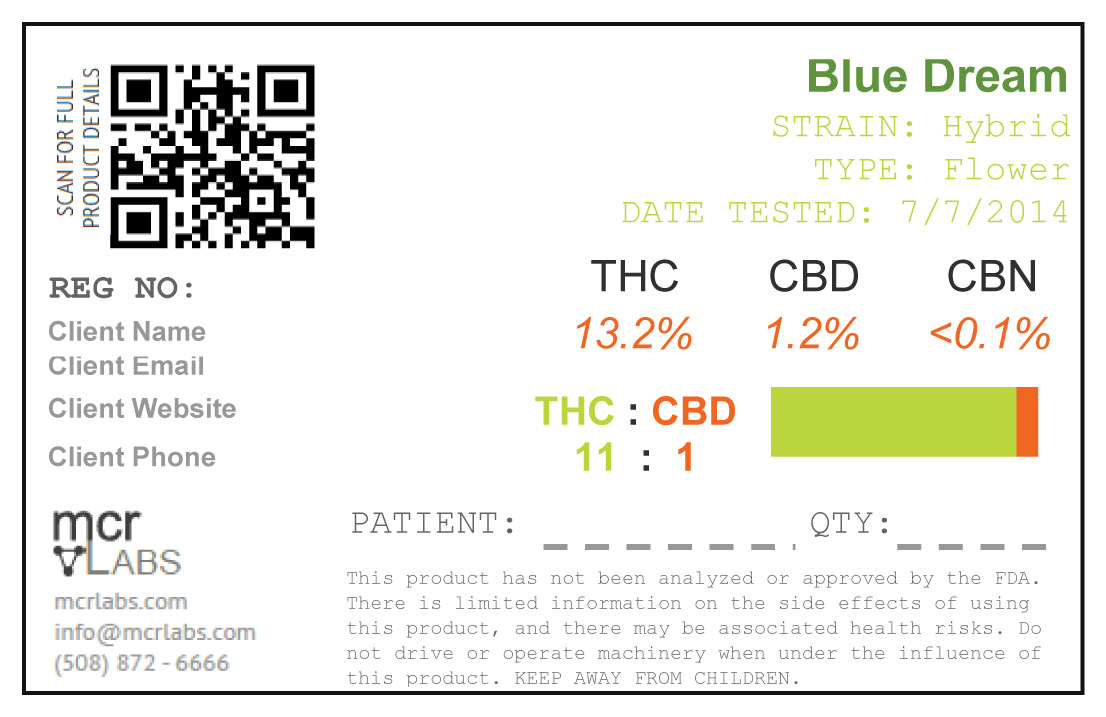Advertisement
Medical Marijuana 101: What's In Your Drug?
ResumeJack Boyle reaches across the marble island in his kitchen for a small blue glass bottle with a black rubber cap. He holds it to the light, shaking the liquid, a marijuana concentrate.
"The person who made this didn’t make it properly," Boyle says.
Boyle’s wife Susan Lucas uses the marijuana concentrate, or tincture, to prevent epileptic seizures. The first batch helped, so Boyle went back for more.
But then, "Sue started seeing her symptoms coming back," he says. "We immediately took [the new batch] to the lab, had it tested. It didn’t have the CBD in it."
The second batch, it seems, wasn’t heated enough to activate CBD, one of the compounds in marijuana that supporters say helps with muscle spasms and seizures.
Now Boyle is learning how to make a perfect concentrate on his own, in his kitchen in Stow. He bought a Crock-pot and found a recipe for marijuana tinctures online.
"I’ll make a batch and have Michael Kahn test it again, and if [it] matches up to at least as strong as the first batch then we’re good to go for six months to a year," Boyle says. "It’s my wife, I just want to do the best I can."
Michael Kahn is an analytical chemist and president of Massachusetts Cannabis Research, or MCR Labs, in Framingham. It's the first marijuana testing lab to open in Massachusetts.
"We provide quality control," Kahn says.
With all the attention to dispensaries that will grow and sell marijuana for medical use, the question of who will test the drug has been largely overlooked. The state Department of Public Health (DPH) is expected to issue testing protocols soon, but they may be a work in progress — at least for the first few years — as this industry takes shape across the country.
"This being brand new, everybody in the states that we’ve been talking to, they’re all looking at this very topic and trying to figure out, what should the standards be, and therefore how do you ensure compliance with the standards?" says Karen van Unen, director of the state’s Medical Use of Marijuana program within DPH.
So, for the moment, Kahn is largely setting his own rules. DPH says it will require that labs provide the "cannabinoid profile" of each sample. Cannabinoids are chemical compounds found in marijuana, some of which have medicinal value. DPH says labs will have to determine the strength of THC, the chemical that produces a high, but the state has not said which other compounds a profile must include. Kahn says that based on guidance from doctors, his lab tests for six compounds.
He analyzes the potency of these compounds in plant samples or in tinctures, cookies, drinks, gummy bears — anything infused with marijuana.
No two strains of marijuana are alike. One might have lots of CBD and another lots of THC.
"One specific example is Blue Dream," Kahn says. "We’ve tested it, I don’t know, 10 to 15 times, from different providers, different patients, different caregivers have grown it, probably in different conditions. And we’ve seen that strain go from 5 percent to 25 percent THC."
There may be more consistency among plants once dispensaries open later this year or early next year. They will be required to grow all of the marijuana they sell, test it and put the results on a label, like this one created by MCR Labs:

Labs will be required to look for heavy metals, mold, mildew and pesticides. It’s not clear yet how frequently dispensaries will have to test their product. Some states require tests of each harvest.
There is no government agency, like the Food and Drug Administration, that is establishing standards for growing, testing, processing or distributing marijuana, because the drug is illegal in the eyes of the federal government. One pro-marijuana group, Americans for Safe Access (ASA), promotes uniform testing guidelines that it hopes states will adopt.
The industry is "moving away from a black box approach," ASA senior scientist Jahan Marcu says. "It's moving away from people just being comfortable enough with sprinkling some cannabis into a machine. As more new states are coming online, they’re requiring basic product safety information."
There are still many unknowns in Massachusetts.
There are still many unknowns in Massachusetts. Doctors may certify patients who want to use marijuana, but most physicians have no idea whether Blue Dream, Sour Diesel, Mango Kush or dozens of other strains is the best option.
And they have no idea how much to suggest that you take. Kahn has created an online calculator to help patients figure out how translate sample results into an accurate marijuana dose. It's based on the dose for one FDA-approved cannabis-based drug, Marinol.
"We’re trying to shed some light on this," Kahn says, "and move it toward the pharmaceutical approach where you actually are informed of the dose you might receive."
State regulators say it will be the job of dispensaries — once they open — to establish recommended doses.
Patients will also have to be careful about how they ingest marijuana. The effects of smoking or vaporizing marijuana are immediate but don’t last as long as eating cookies or brownies, where digestion slows but lengthens the impact.
In a world where prescriptions are tightly regulated, turning marijuana into a legal medicine is a new frontier.
